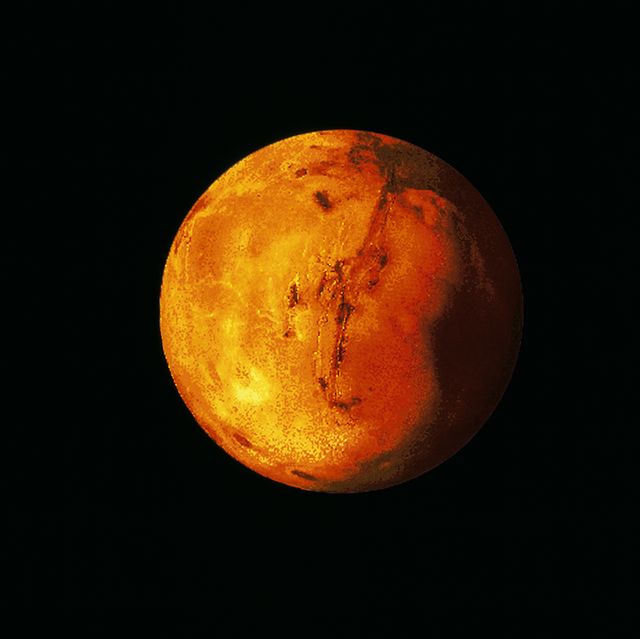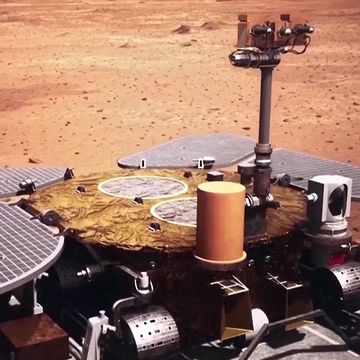- Researchers have discovered that Mars’s rotation is speeding up.
- Using data from the retired InSight lander, researchers used very precise radio measurements to clock the milliarcseconds-per-year2acceleration.
- The team also used data from InSight to make new observations of Mars’s wobble, which is caused by the liquid core of the planet.
The InSight Mars lander has turned out to be a gift that keeps on giving. Even though its mission ended late last year, the data sent back to Earth by the lander has continued to provide new and exciting windows through which to investigate the red planet.
Recently, researchers studying InSight data discovered that Mars’s rotation is speeding up. Granted, the effect is small—the rate of spin is only increasing by about 4 milliarcseconds per year²—but Martian days are definitely getting shorter. The team published the details of this finding in the journal Nature.
Collecting the data necessary to see this change in action wasn’t easy. “What we’re looking for are variations that are just a few tens of centimeters over the course of a Martian year,” Sebastien Le Maistre, the lead author on the paper, said at the Royal Observatory of Belgium. “It takes a very long time and a lot of data to accumulate before we can even see these variations.”
The project made use of measurements from InSight’s first 900 days on Mars—a long enough time frame to see changes on the scale of milliarcseconds per year—and put the lander’s Rotation and Interior Structure Experiment (RISE) instrument panel through its paces. NASA used its Deep Space Network to send a beam of radio waves out towards the InSight lander on our next door neighbor planet. When the beam arrived, RISE bounced it back to Earth, where the beam was examined for tiny changes in frequency. Changes in frequency allowed the researchers to see changes in rotational speed.
Once the researchers were sure that the changes were due to rotational speed and not contamination—radio frequency can be shifted by things like water in our atmosphere or solar wind—they were able to see the speed change bright and clear.
“It’s really cool to be able to get this latest measurement—and so precisely,” Bruce Banerdt, InSight’s principal investigator, said in a news release. “I’ve been involved in efforts to get a geophysical station like InSight onto Mars for a long time, and results like this make all those decades of work worth it.”
Right now, the “why” of this change is still a mystery. But researchers have a few theories, including ice being present in greater amounts at the poles and what’s called “post-glacial rebound,” where land that was previously buried under layers of ice can rise once that ice is no longer present. Both of these circumstances would change the mass distribution of the planet, which can change its rotation.
On top of all this, researchers were able to make and entirely different measurement with the RISE data. They clocked Mars’s wobble, which occurs due to the sloshing of molten material in its liquid core. This carefully quantified allowed the scientists to garner better insight into both the size, shape, and formation of the planet’s core.
“RISE’s data indicate the core’s shape cannot be explained by its rotation alone,” Attilio Rivoldini, one of the authors on the paper, said at the Royal Observatory of Belgium. “That shape requires regions of slightly higher or lower density buried deep within the mantle.”
We as a species tend to enjoy our ever-growing population of Mars robots. We send them up, give them names, follow their progress, and cheer them on. They in turn send us back incredible data on a world we can’t yet visit ourselves. And InSight has more than proven that the retirement of one of our extra-planetary friends doesn’t mark the end of the gifts it will give.
Jackie is a writer and editor from Pennsylvania. She's especially fond of writing about space and physics, and loves sharing the weird wonders of the universe with anyone who wants to listen. She is supervised in her home office by her two cats.













